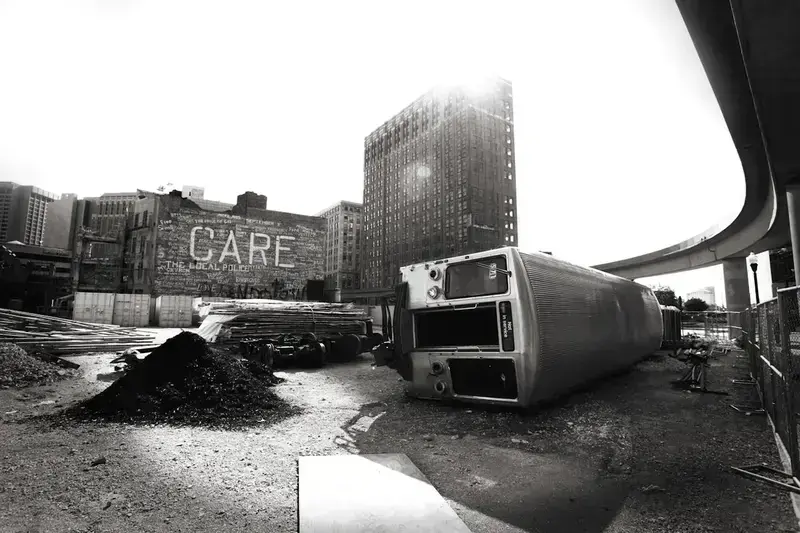Against the backdrop of climate threats, hurricanes, floods, and tsunamis that have become more frequent due to global warming Experts have voiced a grim forecast regarding the future. New York that suddenly became deserted.
If there is no one to sweep the sidewalks, weed Central Park, or turn on the power grid, nature will quickly intervene. Dandelions will sprout from cracks in the asphalt. Raccoons will settle in abandoned apartments. The city will plunge into darkness.
Author of the publication Popular Science Sara Dern spoke with architects, urban ecologists, and futurists to create a timeline of the decline of the Big Apple, devoid of people.
The first month
If no one is available to service the electrical grid, the Big Apple will be plunged into darkness within a few days. Without air conditioning and heating, mold will form on the walls of buildings, believes architect Jana Horvat from the University of Zagreb (Croatia), who studies building deterioration.
Some ecological objects, such as billboards powered by solar and wind energy, will stay illuminated longer. But eventually, they too will go dark, as there will be no one to replace the LED bulbs.
Without electricity, the pumping stations that daily remove 13 million gallons of water from the subway will become useless. Water will flood the train tunnels. “Plants will start to grow there, and animals will settle in. The first to take advantage of the uninhabited area will be species that have already made the subway their home, such as rats, cockroaches, pigeons, and opossums,” suggested Khorvat.
During the first month, the lawns of Central Park will become wild and unkempt. “When you stop mowing the lawn, you get a meadow,” said botanist Peter Del Tredici, a senior research associate at Harvard University and an expert on urban vegetation. Over this month, dandelions, ragweed, and yellow foxtail will sprout among the already knee-high grasses of New York’s iconic parks. In addition to herbaceous plants, new trees, shrubs, and vines will take over the park spaces, Tredici says.

The first 10 years
In a year without people, many buildings in New York will start to deteriorate. “The glass facades will be the first to disappear,” says Horvat. Over the decades, even the tempered glass of skyscrapers will crack. Water will seep through the broken windows. “Apartments will turn into damp greenhouses, an ideal place for mosquitoes, water snakes, fungi, and reeds,” continued Tredici.
Without maintenance, asphalt streets and parking areas will degrade. The freeze-thaw cycles will lead to the formation of cracks. Water will seep into them, and moss will grow there. In 10 years, young trees may even sprout.
The Statue of Liberty will also deteriorate. Its copper coating will begin to crack, allowing water splashes to damage the internal steel skeleton. “Steel is a strong material, but it is very prone to corrosion. And that’s bad for New York – a city made of steel,” noted Horvat.
The first 50 years
According to Tredici, a new ecosystem will emerge in the deserted New York over the next few decades: “It will be unlike anything that has ever existed in the world.”
A botanical expert cited the example of Detroit’s long-term neglect. According to Tredici, the city is now overrun by wild apple trees—robust ornamental plants that grow in the mountains of Central Asia. “They can spread all over the world,” says Tredici. In New York, where there have been no people for half a century, wild apple trees in Central Park and Riverside Park will thrive among a young forest filled with honey locusts, oaks, and Norway maples (common street trees of the Big Apple). Curly nightshade plants and poison ivy will creep up buildings, while mosses and resilient weeds will cover the upper parts of wind-battered skyscrapers.
More and more animals will consider Manhattan their native environment. At first, deer, rabbits, groundhogs, and wild turkeys will move in. Following them will be larger predators – coyotes, bobcats, black bears, and copperhead snakes. Peregrine falcons, bald eagles, red-tailed hawks, and great horned owls will nest in former human dwellings. Meanwhile, wild cats will roam the abandoned upper floors of apartment buildings, feeding on mice and birds.

The first 100 years
A century without people will mark the end of the skyscraper era. According to experts, the newer spires of the city will be the first to fall. Young buildings rely on thin, yet reinforced steel skeletons encased in reinforced concrete. However, when the electricity goes out and water seeps through the glass walls, the high-rises rot from the inside.
The Empire State Building and the Chrysler Building are likely to be more resilient than the younger towers. Built to withstand significantly more weight than necessary, the steel frames of these older giants are reinforced with thick stone masonry and internal walls. These skyscrapers may stand for half a century longer, but eventually, they too will fall.
In a hundred years, New York will turn into a forest, says Tredici. A canopy of mature trees over 30 meters tall will replace skyscrapers. Concrete, one of the strongest building materials, will dissolve. The meticulously maintained river parks of New York will transform into wetlands teeming with herons, turtles, beavers, and muskrats.
But even when the skyscrapers crumble and the underbrush grows, some parts of the Big Apple will survive, suggested Horvat. Marble lions will peek through the forest floor. Details of granite fountains will stick out from the soil and underbrush, while rusty steel beams will emerge from the dense root system. Even without people, New York will partially endure. This fragile legacy will either be discovered and studied or forgotten.
